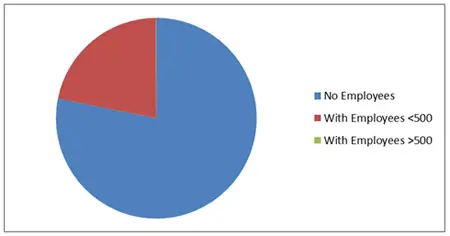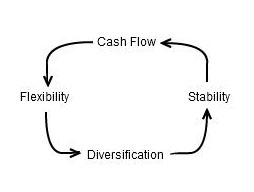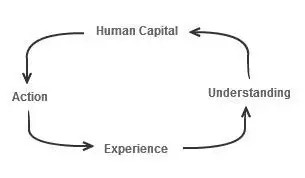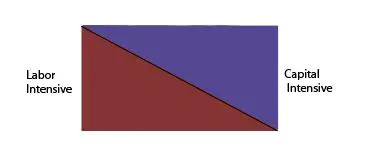Most people you talk to will agree that the likelihood for success of a small business is not high. If you were to ask why, most would not have an answer. It is common knowledge that small businesses have it rough, but it is not common knowledge as to why. In this article I will explore contributing factors to small business volatility in order to better equip aspiring business men and women for success.
Small Business Paradigm
The definition of a small business is much like the definition of an entrepreneur–many people think they know the definition but they truly do not. To understand why small business is risky business, it helps to identify the small business paradigm. This is not to be confused with Small Business Association’s definition of small business. The SBA defines small business as businesses with less than 500 employees. This means that 99.9% of all businesses in the United States are small businesses. The trouble with this definition is that it ignores business type; it only acknowledges a head count. The most recent numbers I could find indicated a total business count in the US of 27.5 million. 21.5 million have no employees; of the remaining 6 million, only 18,000 have 500 employees or more. The distribution would look like the following, with “large” business taking up the green sliver at 12 o’clock. I don’t agree with the SBA’s definition of small and large business, but the data does paint a picture of how many individuals operate as loan rangers.

Understanding the small business paradigm as a type of business and not in terms of employee count opens the door to understanding how small business should be conducted.
To speak of small business as a paradigm is to outline the model that small business follows. Now I know that the specifics of each business will differ, but there are a few universal truths that can be drawn to help identify the small business paradigm as a whole.
Small business is small business because large business has determined that pursuit of such a market is not worth the effort. Large business by nature pursues opportunities that require larger capital investments and yield minimal fluctuation. Small businesses by nature pursue opportunities that require a smaller capital investment and have higher market fluctuation. Consequently, many of the opportunities that will exist for a small business have demands that fluctuate and exist in markets that are inherently more risky. You can see how this has nothing to do with employee count.
The resources and capabilities of a firm will attract them to a particular industry environment. (Dean, Brown, and Bamford 1998) A small firm is agile and flexible, allowing it to move and change to meet the varying demand of a quickly changing market. A larger firm, on the other hand, will be more inclined to focus on opportunities that can be exploited by greater finances and the requirement for more resources. Larger businesses avoid ventures that maintain high variability, and this creates a window of opportunity for smaller entities.
In small businesses, potential customers are looking to be catered to or to have a custom solution. Maintaining real-time feedback and providing fast turnarounds are essential when conducting business on a smaller level. Customers turn to larger companies when they are looking for a lower priced, prepackaged solution. This is a fundamental truth of small business, and if not adhered to, the probability of failure will remain high.
This dynamic alone should assist many of you in determining your market positioning. As a small business it is imperative that you demand a large profit margin and provide a quality product or service in a timely manner. Failing to adhere to this truth will result in a quick demise of your company.
Stages of Business Development
It is helpful to also understand the stages of business development so that a standard can be established to gauge viability. Churchill’s five stages of small business growth can be used as this standard. A start-up is concerned with the first two stages, stage one (existence) and stage two (survival). After the first two stages, a business begins to move out of the small business paradigm.
In stage one:
“The organization is a simple one – the owner does everything …systems and formal planning are minimal to non-existent. The company’s strategy is simply to stay alive. The owner is the business, performs all the important tasks, and is the major supplier of energy, direction, and, with relatives and friends, capital.” (Churchill1983, 3)
Regarding stage two:
“The ‘mom and pop’ stores are in this category, as are manufacturing businesses that cannot get their product or process sold as planned. Some of these marginal businesses have developed enough economic viability to ultimately be sold, usually at a slight loss. Or they may fail completely and drop from sight.” (Churchill 1983, 4)
Knowing of these stages allows a founder to be conscious of the company’s progress. This is important for a start-up, because businesses should only remain small for a short period.
“Small businesses are merely transitory and will largely disappear in the long run.” (Brock and Evans 1988, 10)
Small Business Capital Requirements
Capital requirements within any business need to be met in order to continue operation, and can be broken down into two categories, financial capital and human capital. Capital in general can be considered as the resources available for the use of production. Financial capital concerns the monetary resources, and human capital concerns the knowledge or intellectual resources.
By definition, most small businesses have very little reserves, so small businesses are especially concerned about financial capital and the requirement for cash flow. If the demand for a service rises and falls inconsistently and the costs remain high, a small business can find itself in a compromising situation. Market fluctuations will always be a concern, but a bootstrapping small business is especially vulnerable, because they don’t have the capital to weather too long of or too many economic storms.
“The main problems presented by seasonality relate to cash flow and overall profitability” (Getz and Carlson 2000, 554).
A solution to cash flow concerns is often diversification.
“Risk reduction for the firm is achieved by diversification across products and services produced, across clients supplied, and across input producers.” (Cressy 2006, 104).
Although difficult for a small business, diversifying services to accommodate many markets or many needs can allow for a more stable cash flow. Anything that can be done to maintain a constant positive cash flow will be vital in keeping a small business viable.
Cash flow requirements and the inability to diversify push for larger margins in smaller business. Larger margins are generally only available where competition is low, and competition is low in untapped markets. Creating a new path and plunging into the unknown is part of being a small business and is required to maintain a competitive advantage over those that have more capital and resources but lack the flexibility to meet needs that are not well-defined.
Without cash a business is at risk. Additional cash flow offers more possibilities to diversify. Diversification leads to more stability, and more stability leads to consistent cash flow. The growth of a business and ultimately wealth depends on the cycle illustrated in figure 1.
Figure 1. Cash flow cycle
A similar cycle plays into the human capital of a small business. The longer an individual operates within an industry, the more human capital he or she acquires. The greater the human capital, the lower the probability of failure. Illustrated in figure 3, human capital dictates the actions, actions create experience, experience leads to understanding, and further understanding results in greater human capital.
Figure 3. Human capital cycle
Small Business as a Service
Given the principles stated above, it becomes advantageous to play into the strengths of small business. The advantage of a small business is the ability to be agile and meet ever-changing needs in a smaller niche. By nature, services fit well into the small business paradigm. Large businesses often lack the flexibility and agility to compete within such markets. The large businesses are in a position to leverage their resources and capital to break into markets that have larger capital and resource-oriented barriers of entry.
“small businesses possess certain resources that allow them to overcome some barriers which create greater difficulties for their larger counterparts, as well as allow small businesses to exploit certain industry opportunities more readily than larger ones” (Dean, Brown, and Bamford 1998, 709)
The labor and capital distribution will appear similar to the graph shown in figure 4 concerning market types of large and small businesses.
Figure 4. Labor – Capital distribution
High-capital businesses would include banks and investment organizations that leverage their capital in order to make a profit. The labor businesses would include organizations that require high man hours in order to produce. Potential entrepreneurs often don’t have the capital at their disposal to get into capital-intensive businesses, but they do have the ability to offer labor-intensive services.
What to Take Away
If it is possible to start a small business while taking into account the fundamental truths stated above, the probability for success will be much higher. Understanding the paradigm of small business for what it is will allow you to make the appropriate choices for your organization as it grows. Small business is volatile by nature, and there is no getting around that, but it is possible to work with it.




Pingback: Starting Up a Small Business
Pingback: Small Business Financial Help
Pingback: The Advantages of a Small Business
Pingback: How to Increase Profits in Business
Pingback: 5 Steps to Start a Small Business
Pingback: 5 Steps to Start a Small Business – SHY Entrepreneur.com